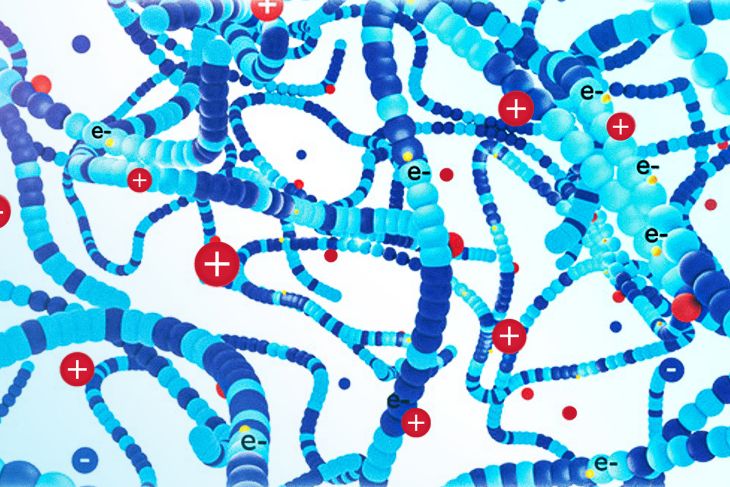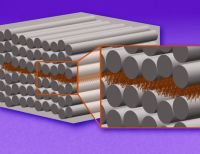Certain electronics that integrate with the human body — a smartwatch that samples your sweat, for instance — work by converting the ion-based signals of biological tissue into the electron-based signals used in transistors. But the materials in these devices are often designed to maximize ion uptake while sacrificing electronic performance.
To remedy this, MIT researchers developed a strategy to design these materials, called organic mixed ionic-electronic conductors (OMIECs), that brings their ionic and electronic capabilities into balance.
These optimized OMIECs can even learn and retain these signals in a way that mimics biological neurons, according to Aristide Gumyusenge, the Merton C. Flemings Assistant Professor of Materials Science and Engineering.
“This behavior is key to next-generation biology-inspired electronics and body-machine interfaces, where our artificial components must speak the same language as the natural ones for a seamless integration,” he says.
Gumyusenge and his colleagues published their results Friday in the “Rising Stars” series of the journal Small. His co-authors include Sanket Samal, an MIT postdoc; Heejung Roh and Camille E. Cunin, both MIT PhD students; and Geon Gug Yang, a visiting PhD student from the Korea Advanced Institute of Science and Technology.
Building a better OMIEC
Electronics that interface directly with the human body need to be made from lightweight, flexible, and biologically compatible electronics. Organic polymer materials like OMIECs, which can transport both ions and electrons, make excellent building blocks for the transistors in these devices.
“However, ionic and electronic conductivities have opposite trends,” Gumyusenge explains. “That is, improving ion uptake usually implies sacrificing electronic mobility.”
Gumyusenge and his colleagues wondered if they could build a better OMIEC by designing new copolymers from the ground up, using a highly conductive pigment called DPP and engineering the copolymer’s chemical backbone and sidechains. By selectively controlling the density of specific sidechains, the researchers were able to maximize both ion permeability and electron charge transport.
The technique could be used “to establish a broad library of OMIECs … thus unlocking the current single-material-fits-all bottleneck” that now exists in ionic-electronic devices, Gumyusenge says.
The newly designed OMIECs also retain their electrochemical properties after undergoing a baking step at 300 degrees Celsius (572 degrees Fahrenheit), making them compatible with commercial manufacturing conditions used to make traditional integrated circuits.
Given that the OMIEC design process involved adding softer and more “ion-friendly” building blocks, the polymers’ thermal properties and the impact of heat treatment “was impressive and a pleasant surprise,” Gumyusenge says.
OMIECs in artificial neurons
The MIT researchers’ design strategy makes it possible to tune the ability of an OMIEC to receive and hold on to an ion-based electrochemical charge. The process resembles what happens with biological neurons, which use ions to communicate during learning and memory.
This made Gumyusenge’s team wonder: Could their OMIECs be used in devices that mimic the synaptic connections between neurons in the brain?
The MIT study showed that the artificial synapses could conduct signals in a way that resembles the synaptic plasticity underlying learning, as well as a persistent strengthening of the synapse’s signal transmission that resembles the biological process of memory formation.
Someday these types of artificial synapses might form the basis of artificial neural networks that could make the integration of electronics and biology even more powerful, the researchers say.
For instance, Gumyusenge says, “materials such as the polymer we report are promising candidates toward the development of closed-loop feedback systems,” which could do things like monitor a person’s insulin levels and automatically deliver the correct dose of insulin based on these data.
The study was supported, in part, by the K. Lisa Yang Brain-Body Center at MIT and the Korea Advanced Institute of Science and Technology.














